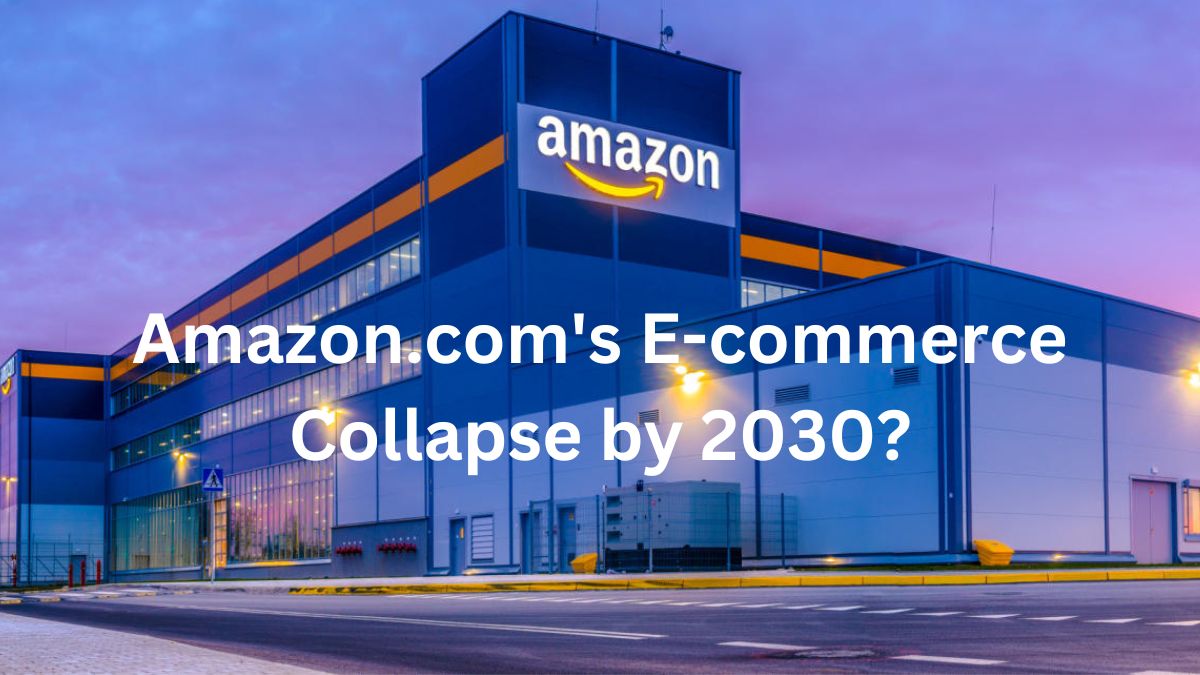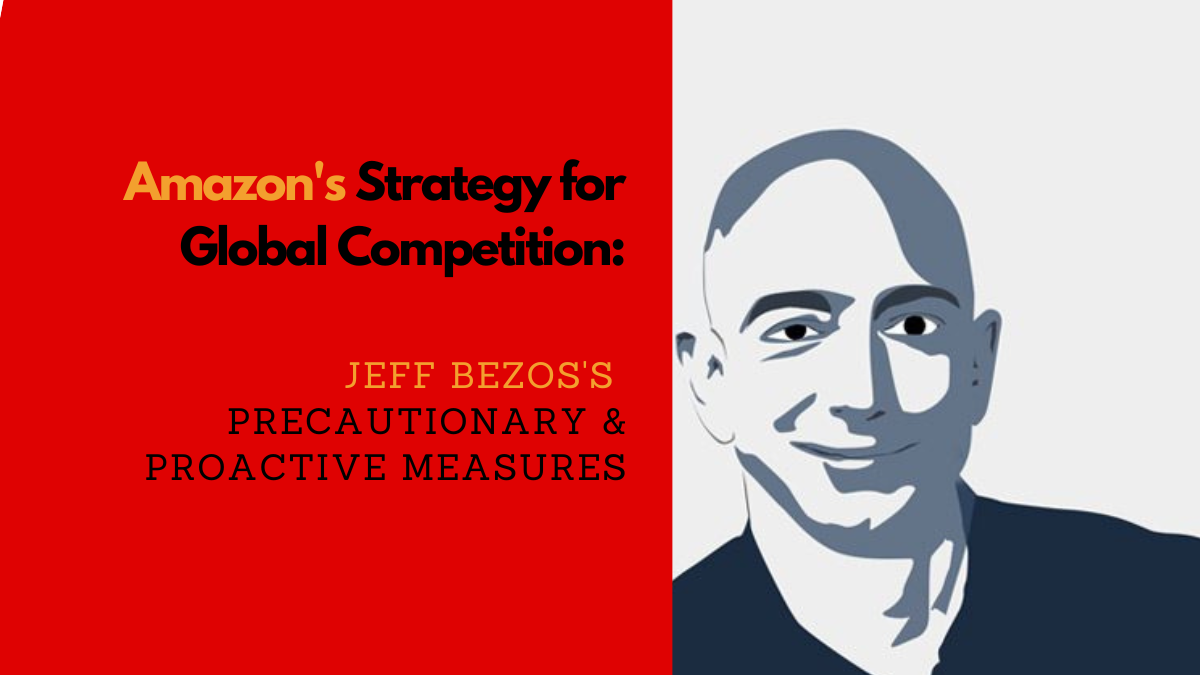What Global Factors Could Cause Amazon.com’s E-commerce Business to Experience a Severe Collapse by 2030?
Amazon.com has emerged as a global powerhouse in the e-commerce industry. Its dominance is evident in its vast selection of products, competitive pricing, and unmatched delivery systems. However, despite its current supremacy, Amazon is not immune to risks. By 2030, several global factors could potentially lead to a severe collapse of Amazon’s e-commerce business. This article delves into these factors in detail, covering economic recessions, supply chain disruptions, regulatory challenges, cybersecurity threats, intense competition, changes in consumer behavior, technological disruptions, and geopolitical instability.
1. Economic Recessions
The Nature of Economic Downturns
Economic recessions have profound effects on consumer spending. When economies contract, unemployment rates rise, and disposable incomes fall. This reduction in disposable income leads consumers to cut back on non-essential expenditures. For a company like Amazon, which relies heavily on consumer purchases, this can be devastating.
Historical Precedents
Historical economic downturns provide a glimpse into how future recessions might impact Amazon. The 2008 global financial crisis, for instance, caused significant reductions in consumer spending. While Amazon managed to weather the storm relatively well, it was not immune to the broader economic impacts. The COVID-19 pandemic, another major economic disruptor, initially led to increased online shopping as brick-and-mortar stores closed. However, prolonged economic strain could eventually reduce consumer spending even on e-commerce platforms.
Long-term Effects of Recessions
Prolonged or severe recessions can lead to sustained decreases in consumer spending. If the global economy faces such a downturn by 2030, Amazon may struggle to maintain its sales volumes. Cost-cutting measures, such as layoffs, reduced investment in innovation, and scaled-back expansion plans, might become necessary. These measures could weaken Amazon’s operational efficiency and competitive advantage.
Fiscal Policies and Their Impact
Government fiscal policies play a crucial role in mitigating the effects of economic recessions. Stimulus packages, unemployment benefits, and tax reliefs can bolster consumer spending. However, if governments worldwide fail to implement effective fiscal policies during economic crises, the resulting prolonged downturns could significantly affect Amazon’s e-commerce business.
2. Supply Chain Disruptions
Complexity of Global Supply Chains
Amazon’s success is intricately linked to its efficient and vast supply chain network. The company relies on a complex web of manufacturers, suppliers, logistics providers, and distribution centers spread across the globe. Any disruption in this network can have severe repercussions on its ability to deliver products promptly.
Vulnerabilities Highlighted by the COVID-19 Pandemic
The COVID-19 pandemic underscored the vulnerabilities of global supply chains. Lockdowns, factory shutdowns, and transportation restrictions led to significant delays and shortages. Amazon faced challenges in maintaining its inventory levels and fulfilling customer orders. Similar disruptions in the future, whether due to pandemics, natural disasters, or geopolitical tensions, could further strain Amazon’s supply chain, leading to customer dissatisfaction and potential loss of market share.
Strategies for Mitigation
To mitigate supply chain risks, Amazon has invested in building a more resilient network. This includes diversifying suppliers, increasing local sourcing, and investing in advanced technologies such as artificial intelligence and blockchain for better supply chain visibility and management. However, these measures require substantial investment and time to implement effectively.
3. Regulatory Challenges
Increasing Scrutiny from Governments
Governments around the world are increasingly scrutinizing big tech companies. Regulatory challenges include antitrust lawsuits, data privacy laws, labor regulations, and tax compliance. These regulations aim to ensure fair competition, protect consumer data, and uphold labor rights. However, they also impose significant operational and financial burdens on companies.
Antitrust Actions and Market Dominance
Amazon’s market dominance has raised concerns about anti-competitive practices. In the United States, the European Union, and other regions, regulatory bodies are investigating Amazon’s business practices. Potential outcomes of these investigations could include hefty fines, operational restrictions, or even forced divestitures of certain business units. Such actions could significantly impact Amazon’s ability to operate efficiently and maintain its competitive edge.
Data Privacy and Consumer Trust
Data privacy is another critical regulatory challenge. With stringent regulations like the General Data Protection Regulation (GDPR) in the European Union, Amazon must ensure compliance to avoid substantial fines and legal repercussions. Non-compliance or data breaches could erode consumer trust, leading to a decline in user base and sales.
4. Cybersecurity Threats
The Rising Threat of Cyber Attacks
As one of the world’s largest e-commerce platforms, Amazon is a prime target for cyber attacks. These attacks can range from data breaches and ransomware to phishing and distributed denial-of-service (DDoS) attacks. A significant security breach could result in the theft of sensitive customer data, financial loss, and damage to Amazon’s reputation.
Impact on Consumer Trust and Financial Stability
Cybersecurity threats pose a dual risk to Amazon. First, they can directly impact financial stability through theft, fraud, and ransom demands. Second, they can severely damage consumer trust. Customers expect their data to be secure, and any breach can lead to a loss of confidence in Amazon’s ability to protect their information. This erosion of trust could result in a significant decline in the customer base and sales.
Investment in Cybersecurity Measures
Amazon has invested heavily in cybersecurity measures, including advanced encryption, multi-factor authentication, and continuous monitoring systems. However, the evolving nature of cyber threats means that Amazon must continuously upgrade its defenses. Failure to do so could leave the company vulnerable to new and sophisticated attacks.
5. Intense Competition
The Competitive E-commerce Landscape
The e-commerce industry is highly competitive, with numerous players constantly vying for market share. Competitors like Walmart, Alibaba, and smaller niche online retailers pose significant threats to Amazon’s dominance. These competitors continuously innovate, improve their services, and adopt aggressive pricing strategies to attract customers.
Innovation and Adaptation
To maintain its competitive edge, Amazon must continuously innovate and adapt. This includes enhancing customer experience, expanding product offerings, and optimizing logistics. However, innovation requires substantial investment and carries inherent risks. If Amazon fails to innovate effectively, it could lose its competitive advantage.
Market Saturation and Diversification
Market saturation in key regions is another challenge. As Amazon’s primary markets become saturated, the company must seek growth opportunities in emerging markets. However, entering new markets involves significant challenges, including understanding local consumer behavior, navigating regulatory landscapes, and building logistical infrastructure.
6. Changes in Consumer Behavior
The Evolution of Consumer Preferences
Consumer preferences are dynamic and can shift rapidly. Recent trends such as increased environmental awareness and demand for sustainable products are reshaping consumer behavior. Amazon must adapt to these changes to remain relevant.
Environmental Concerns and Sustainable Practices
The growing concern over environmental sustainability is influencing consumer choices. Customers are increasingly favoring companies that adopt sustainable practices. Amazon has made strides in this area, such as committing to net-zero carbon emissions by 2040 and investing in renewable energy. However, failure to meet these sustainability goals or public perception of greenwashing could lead to a decline in consumer trust.
The Rise of Localized Shopping
Another significant trend is the rise of localized shopping and support for small businesses. Consumers are increasingly valuing local products and businesses, which could divert spending away from global giants like Amazon. To counter this, Amazon has introduced initiatives like Amazon Handmade and the Amazon Small Business Academy to support small and local businesses.
7. Technological Disruptions
The Impact of Emerging Technologies
Technological advancements are both an opportunity and a threat to Amazon. While the company has been at the forefront of adopting new technologies, disruptive innovations could challenge its business model.
Blockchain and Decentralized Marketplaces
Blockchain technology and decentralized marketplaces are emerging as potential disruptors in the e-commerce industry. These technologies offer greater transparency, security, and reduced transaction costs, challenging traditional e-commerce platforms. If Amazon fails to integrate these technologies effectively, it could lose its competitive edge.
The Role of Artificial Intelligence
Artificial intelligence (AI) is another critical area. While Amazon has successfully implemented AI in various aspects of its operations, including recommendation engines and logistics, ongoing advancements in AI could render existing technologies obsolete. Amazon must continuously invest in AI research and development to stay ahead of the curve.
8. Geopolitical Instability
The Influence of Geopolitical Tensions
Geopolitical instability poses significant risks to Amazon’s global operations. Trade wars, diplomatic tensions, and political instability can disrupt supply chains, increase operational costs, and limit market access.
Trade Wars and Tariffs
Trade tensions between major economies, such as the ongoing US-China trade war, can impact Amazon’s supply chain and market access. Tariffs and import/export restrictions increase costs and disrupt the flow of goods. These challenges can result in higher prices for consumers and reduced competitiveness for Amazon.
Political Instability and Market Access
Political instability in key markets can also affect Amazon’s operations. Unstable political environments can lead to sudden regulatory changes, currency fluctuations, and even nationalization of assets. These risks necessitate a robust risk management strategy to mitigate potential impacts.
Conclusion
Amazon.com’s e-commerce business, despite its current dominance, is vulnerable to various global factors. Economic recessions, supply chain disruptions, regulatory challenges, cybersecurity threats, intense competition, changes in consumer behavior, technological disruptions, and geopolitical instability all pose significant threats to its stability and growth. To mitigate these risks, Amazon must remain vigilant, adaptable, and innovative, continually evolving to navigate the complexities of the global market. Only by addressing these challenges head-on can Amazon maintain its position as a global e-commerce leader.
Extended Analysis: Further Considerations for Amazon’s Future
To provide a comprehensive analysis, it is crucial to delve deeper into each of these global factors and explore additional nuances that could impact Amazon’s e-commerce business by 2030.
Economic Recessions: Extended Implications
Global Economic Integration and Interdependencies
The global economy is highly interconnected. Economic downturns in major economies can have ripple effects across the globe. For instance, a recession in the United States or China can impact global trade, investment flows, and consumer confidence worldwide. Amazon’s global operations mean it is exposed to these interdependencies, making it vulnerable to economic shocks from multiple fronts.
Income Inequality and Consumer Spending
Rising income inequality could also influence consumer spending patterns. As wealth becomes concentrated in fewer hands, the broader consumer base may experience stagnation in income levels. This could lead to a bifurcation in spending patterns, with high-end and low-end markets thriving while the middle market struggles. Amazon’s diverse product range must cater to these shifting dynamics to maintain its market presence.
Supply Chain Disruptions: Extended Analysis
Technological Solutions and Supply Chain Resilience
Investing in technology can enhance supply chain resilience. For instance, the adoption of Internet of Things (IoT) devices can provide real-time tracking and monitoring of goods, improving transparency and enabling quicker responses to disruptions. Additionally, advanced data analytics can predict potential supply chain issues and allow for proactive measures.
Regional Conflicts and Supply Chain Risks
Regional conflicts, such as those in the Middle East or South China Sea, can disrupt key shipping routes and supply chains. Amazon must consider geopolitical risks in its supply chain strategy, including diversifying routes and suppliers to mitigate potential disruptions.
Regulatory Challenges: Extended Analysis
Global Regulatory Harmonization and Divergence
While there is a trend towards stricter regulations, there is also a divergence in regulatory approaches across different regions. For instance, the EU’s GDPR sets a high standard for data privacy, while regulations in other regions may be less stringent. Navigating these divergent regulatory landscapes requires a nuanced approach and significant legal expertise.
Labor Practices and Worker Rights
Labor practices and worker rights are increasingly under scrutiny. Amazon’s treatment of warehouse workers has been criticized, leading to calls for better working conditions and wages. Compliance with labor regulations and improving worker satisfaction are critical to avoiding legal challenges and maintaining a positive public image.
Cybersecurity Threats: Extended Analysis
The Evolving Nature of Cyber Threats
Cyber threats are continually evolving, with hackers employing more sophisticated techniques. Amazon must stay ahead of these threats by investing in cutting-edge cybersecurity measures and fostering a culture of security awareness among employees.
Collaboration and Information Sharing
Collaboration with other companies and government agencies can enhance cybersecurity. Information sharing about threats and best practices can help Amazon strengthen its defenses. Participating in cybersecurity coalitions and adhering to industry standards are essential steps in this direction.
Intense Competition: Extended Analysis
The Role of Niche Players and Market Fragmentation
While Amazon dominates the e-commerce market, niche players focusing on specific segments (e.g., luxury goods, sustainable products) are gaining traction. Market fragmentation could challenge Amazon’s one-size-fits-all approach, necessitating more tailored strategies to capture diverse consumer segments.
Strategic Partnerships and Acquisitions
To counter competition, Amazon can explore strategic partnerships and acquisitions. Collaborating with local retailers, acquiring innovative startups, and forming alliances can enhance its market position and capabilities.
Changes in Consumer Behavior: Extended Analysis
The Impact of Social Media and Influencers
Social media platforms and influencers significantly shape consumer behavior. Amazon must leverage these channels to engage with consumers, promote products, and build brand loyalty. Effective social media strategies can drive traffic and sales, particularly among younger demographics.
The Importance of Customer Experience
Customer experience is paramount in retaining and attracting customers. Amazon must continually enhance its website interface, delivery options, and customer service to meet evolving consumer expectations. Personalization and seamless shopping experiences are critical components of a successful e-commerce strategy.
Technological Disruptions: Extended Analysis
The Role of Quantum Computing
Quantum computing, still in its nascent stages, has the potential to revolutionize data processing and cybersecurity. Amazon must keep an eye on developments in quantum computing and explore its applications to enhance its operations and security.
Augmented Reality (AR) and Virtual Reality (VR)
AR and VR technologies are transforming the shopping experience by allowing consumers to visualize products in real-time. Amazon can integrate AR and VR into its platform to offer immersive shopping experiences, particularly in sectors like home decor and fashion.
Geopolitical Instability: Extended Analysis
Global Trade Policies and Economic Nationalism
The rise of economic nationalism and protectionist trade policies can impact Amazon’s global operations. Tariffs, trade barriers, and localization requirements can increase costs and complicate market entry strategies. Amazon must engage in robust trade policy advocacy and adapt its business model to navigate these challenges.
The Role of International Organizations
International organizations, such as the World Trade Organization (WTO), play a crucial role in shaping global trade rules. Amazon must actively participate in international forums and align its strategies with evolving trade regulations to ensure smooth cross-border operations.
Conclusion
Amazon.com’s e-commerce business faces numerous global challenges that could potentially lead to a severe collapse by 2030. Economic recessions, supply chain disruptions, regulatory challenges, cybersecurity threats, intense competition, changes in consumer behavior, technological disruptions, and geopolitical instability all pose significant threats. To mitigate these risks, Amazon must remain vigilant, adaptable, and innovative, continually evolving to navigate the complexities of the global market. By addressing these challenges head-on and investing in resilience, sustainability, and technological advancements, Amazon can strive to maintain its position as a global e-commerce leader well into the future.



